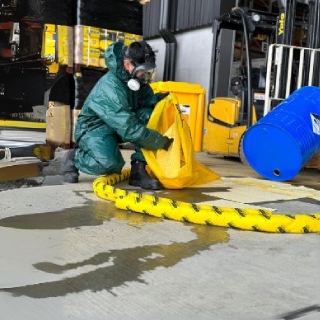
Spills in your workplace must be managed and cleaned up safely. If you come into contact with hazardous substances, you should be prepared in the event of a spill emergency. The regulations require employers to provide adequate training for employees on responding to any chemical spills.
Training must cover site-specific procedures to respond to chemical spills, the use of personal protective equipment (PPE), and the correct use of equipment for spill containment and clean-up. This type of training should be provided at regular intervals to ensure that everyone at the workplace is up to date with the latest procedures and equipment.
Certificates are issued upon successful course completion and comes with a 2-year recommended renewal date.
If you are planning to complete the course in one sitting, please allow for 30 to 50 minutes. We encourage you to take your time to go through the course at your own pace. You can leave and return at any time. You have six months to complete the course before your registration expires.
At the end of this course, you will be able to:
- Understand common industry terms and abbreviations when dealing with dangerous goods.
- Understand the importance of legislation, regulators, and enforcers, including HSR, HSNO, and HSWA.
- Recognize the roles of WorkSafe NZ, the Environmental Protection Agency (EPA), and why spill training is important.
- Understand your obligations, roles, and responsibilities in the event of a spill emergency.
- Identify and classify hazardous substances using the HSNO and GHS classification systems.
- How to read and extract key information from a substance's Safety Data Sheet (SDS), with a focus on sections for Hazard Identification, First Aid, Accidental Release Measures, and Exposure Controls.
- Understand the importance and use of Personal Protective Equipment (PPE) and Respiratory Protective Equipment (RPE).
- Identify the different types of spill kits and which ones are suitable for which type of substance.
- Know the contents of spill kits and how to use them effectively to clean up small indoor and outdoor spills.
- Understand when to escalate a spill emergency.
- Identify specific clean-up precautions for certain classes of dangerous goods.
- How to best prepare before a spill emergency occurs by:
- Identifying how to access relevant information, equipment, and site-specific procedures at the workplace.
- Ensuring that the currently available control measures such as signage, inventory lists and emergency response plans are up-to-date and fit for purpose.
- Checking that everyone is trained and familiar with the emergency response plan and how to read a Safety Data Sheet.
The course is also available as a 60-minute onsite course. Contact us to discuss options.
